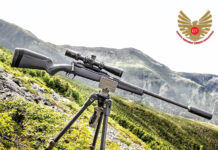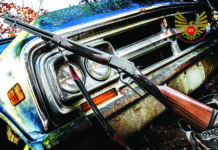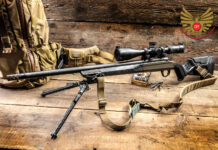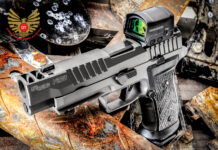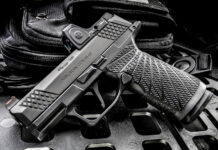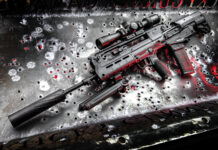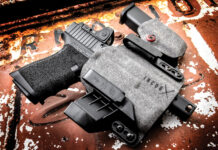
A high-capacity 9mm 1911 from a maker who has built guns for many champions.
The Merriam-Webster Dictionary defines “hex” as a verb meaning to practice witchcraft, or to affect as by an evil spell. However, among the Pennsylvania Dutch, hex signs symbolizing good luck are a long-standing tradition. What has this to do with the STI Hex-Tac pistol, which draws its name from the hexagonal sculpting of the grasping areas on its slide? Well, for one thing, it gives a writer a hook when writing about yet another 1911 pistol.
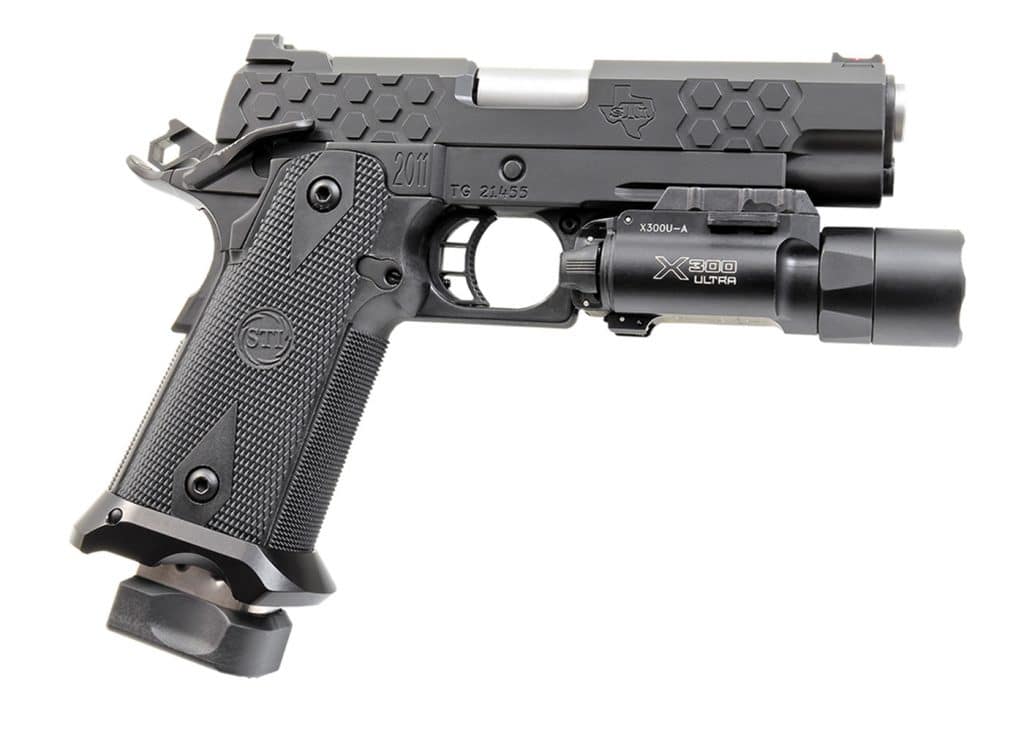 But this is far from just another 1911. The STI brand has long been a favorite among champion shooters. The company is famous for high capacity 1911 pistols that often find their way into the winners’ circles at U.S. Practical Shooting Association matches, and I’ve lost count of how many top competitors I know who swear by the brand for reliability and overall function.
But this is far from just another 1911. The STI brand has long been a favorite among champion shooters. The company is famous for high capacity 1911 pistols that often find their way into the winners’ circles at U.S. Practical Shooting Association matches, and I’ve lost count of how many top competitors I know who swear by the brand for reliability and overall function.
First Impressions

Our test gun is the Hex-Tac 4.0 in 9mm, the designation coming from the hexagonal cuts in the slide grasping area that we mentioned, and the pistol’s 4-inch (actually 4.15-inch) barrel. A lot of thought has gone into the ergonomics of this gun. Those “hexes” on the slide (fore and aft, in the current fashion) really do give the shooter excellent traction for both routine and emergency manipulation. The hexagonal theme is carried into the shape of the hammer, too, and I don’t think it’s just for style or symbolism: the raised edge of the hex point just behind the hammer is easy for the support hand thumb to catch when cocking the pistol. Why cock a pistol of a type most agree should be cocked and locked when loaded? Folks who have trouble racking slides (and there are many who do) will find it a lot easier on hammer-fired guns if they can thumb the hammer back first, relieving mainspring pressure. It’s also handy when dry-firing a single-action pistol such as this one. The Hex-Tec is particularly well-suited for this.

The wide-body grip is glass-filled polymer, checkered 30 lines per inch across its broad front; that and the checkered mainspring housing are complemented by flat diamond-checkered grip panels. Once in hand, grasp was extremely secure. The ambidextrous thumb safety was well-adjusted: quick on and easy off. For those who like a finger-forward grasp, the front of the trigger guard is checkered also (25 LPI).
A single steel bodied magazine was supplied with the test gun. Unloaded, it measured 5.7” from the forward tip of its follower to the bottom front of its floorplate. It held 21 rounds of 9mm Parabellum, with one more in the chamber, of course, and there was still enough flex in the magazine stack that when slapped into the gun with slide forward during tactical reloads or administrative loading, it locked solidly in place without requiring extra effort.
One-handed emergency manipulation has not been ignored. The rear sight is the excellent Heinie Ledge, so called because its forward face is a surface that allows the user to hook it against belt or edge of holster to run the slide one-handed without losing firing grasp (finger, of course, being completely clear of the trigger guard). That Heinie rear sight also has a big, square notch that made my eyes happy and coordinated well with the red fiber optic front post.
The now seemingly obligatory accessory rail is present on the front of the frame. I found lights by SureFire and Streamlight to fit fine and work fine thereupon. With the 4.15” barrel of this particular pistol, the muzzle area sits behind the front of the attached light unit. This creates stand-off capability. That is, if the front of the pistol has to be pressed against the opponent’s body in a do-or-die fight, a standard 1911 including this one will go out of battery and fail to fire . . . but the light ahead of the muzzle can keep that from happening.
Shooting the Hex-Tac 4.0



